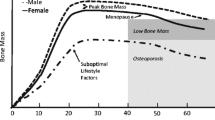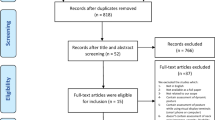Abstract
Introduction and hypothesis
The bony pelvis anatomy is highly variable. This study aims to examine the relationship between anthropometric measurements and the size of the adult female bony pelvis.
Methods
Three-dimensional points of all pertinent landmarks of 96 adult female bony pelvises were obtained and the true conjugate, interspinous distance, intertuberous distance, and pelvic inlet and outlet areas were calculated. The relationship between these measurements and height and multiple anthropometric measurements were evaluated using Pearson’s correlation coefficient (r).
Results
Multiple anthropometric measurements were significantly correlated with the true conjugate and pelvic inlet and outlet areas, but not with the interspinous or intertuberous widths. Height had a greater correlation with pelvic areas than any other anthropometric measure considered, even after controlling for race. There were no significant differences in pelvic areas between races.
Conclusions
Height and other anthropometric measurements were significantly correlated with the true conjugate and pelvic inlet and outlet areas.


Similar content being viewed by others
References
Caldwell WE, Moloy HC (1933) Anatomical variations in the female pelvis and their effect in labor with a suggested classification. 58th Annual Meeting of the American Gynecological Society, pp 479–505
Mahmood TA, Campbell DM, Wilson AW (1988) Maternal height, shoe size, and outcome of labour in white primigravidas: a prospective anthropometric study. BMJ 297:515–517
Rozenholc AT, Ako SN, Leke RJ, Boulvain M (2007) The diagnostic accuracy of external pelvimetry and maternal height to predict dystocia in nulliparous women: a study in Cameroon. BJOG 114:630–635
Van Bogaert LJ (1999) The relation between height, foot length, pelvic adequacy and mode of delivery. Eur J Obstet Gynecol Reprod Biol 82:195–199
Sze EH, Kohli N, Miklos JR, Roat T, Karram MM (1999) Computed tomography comparison of bony pelvis dimensions between women with and without genital prolapse. Obstet Gynecol 93:229–232
Handa VL, Pannu HK, Siddique S, Gutman R, VanRooyen J, Cundiff G (2003) Architectural differences in the bony pelvis of women with and without pelvic floor disorders. Obstet Gynecol 102:1283–1290
Mattox TF, Lucente V, McIntyre P, Miklos JR, Tomezsko J (2000) Abnormal spinal curvature and its relationship to pelvic organ prolapse. Am J Obstet Gynecol 183:1381–1384, discussion 1384
Nguyen JK, Lind LR, Choe JY, McKindsey F, Sinow R, Bhatia NN (2000) Lumbosacral spine and pelvic inlet changes associated with pelvic organ prolapse. Obstet Gynecol 95:332–336
Baragi RV, Delancey JO, Caspari R, Howard DH, Ashton-Miller JA (2002) Differences in pelvic floor area between African American and European American women. Am J Obstet Gynecol 187:111–115
Wurdinger S, Humbsch K, Reichenbach JR, Peiker G, Seewald HJ, Kaiser WA (2002) MRI of the pelvic ring joints postpartum: normal and pathological findings. J Magn Reson Imaging 15:324–329
Buikstra JE, Ubelaker DH (1994) Standards for data collection from human skeletal remains. Proceedings of a Seminar at the Field Museum of Natural History (Arkansas Archeological Report Research Series), Arkansas Archeological Survey
Cupples LA, Heeren T, Schatzkin A, Colton T (1984) Multiple testing of hypotheses in comparing two groups. Ann Intern Med 100:122–129
Awonuga AO, Merhi Z, Awonuga MT, Samuels TA, Waller J, Pring D (2007) Anthropometric measurements in the diagnosis of pelvic size: an analysis of maternal height and shoe size and computed tomography pelvimetric data. Arch Gynecol Obstet 276:523–528
Rizk DE, Czechowski J, Ekelund L (2004) Dynamic assessment of pelvic floor and bony pelvis morphologic condition with the use of magnetic resonance imaging in a multiethnic, nulliparous, and healthy female population. Am J Obstet Gynecol 191:83–89
Acknowledgments
We are extremely appreciative of Lyman A. Jellema, MA, Bruce Latimer, Ph.D., and the Cleveland Museum of Natural History for their unwavering assistance and support of this investigation.
Conflicts of interest
None.
Author information
Authors and Affiliations
Corresponding author
Rights and permissions
About this article
Cite this article
Ridgeway, B., Arias, B.E. & Barber, M.D. The relationship between anthropometric measurements and the bony pelvis in African American and European American women. Int Urogynecol J 22, 1019–1024 (2011). https://doi.org/10.1007/s00192-011-1416-1
Received:
Accepted:
Published:
Issue Date:
DOI: https://doi.org/10.1007/s00192-011-1416-1




